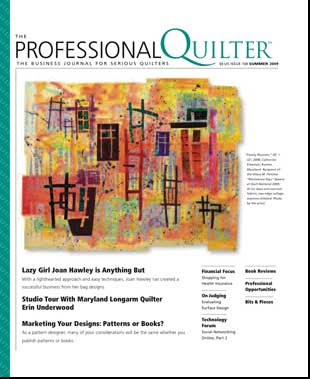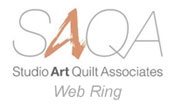book and refer to it constantly, particularly for the dye concentrate formulas and occasionally to get a particular color. It's always been hit or miss, with the emphasis on the "accident" part. When aiming for a particular color, sometimes I'm successful, sometimes not.
I also have Elin Noble's book Dyes & Paints: A Hands-On Guide to Coloring Fabric
(I know I could take Carol Soderland's color class and end up with a marvelous resource of color recipes, but I know I will never be that precise when dyeing fabric. I'm just looking for generalities here and to see how the various primaries affect the final color.)
Part 1 - the plan is to use the "earth tones", which are somewhat subdued from the "jewel tones". I used the three dyes she recommends, or at least something close: Golden Yellow (Dharma 3, which is nearly orange), Light Red (Dharma 12), and Intense Blue (ProChem 406). The orange tendency of the Golden Yellow has a big influence on the final color.
I took her percentages and translated them into milliliters of dye concentrate, which I made using Ann's formula of 2T dye powder in 240ml of water (talk about mixing measuring systems, but I only have measuring spoons in teaspoons and tablespoons, and it's easier to use milliliters when calculating percentages.) I used fat eighths of fabric and labeled each piece according to the color it was going to get. I knew I had to get everything arranged ahead of time in order to not get mixed up. I used little syringes marked in milliliters to measure the dye concentrates, if not exactly, at least pretty close. Here is the color pyramid from earth tones:
This is not a very accurate color presentation, but you can certainly see how the yellow tends toward orange. The outside edges of the triangle are combinations of 2 colors only: red and yellow, yellow and blue, blue and red, with the points being the pure color. I find the colors on the inside of the pyramid much more interesting - these use all three dyes in varying amounts. It's equivalent to adding the complement of the color to the color to mute it somewhat. If I mix yellow and blue, I get green. Red is the complement. Or mix yellow and red to get orange, then add blue. Or mix red and blue to get purple, then add yellow. It was really interesting to see how little or how much of a color was needed to make a change. The color in the middle of the third row from the bottom is the brown that results from equal intensities of the 3 dyes. But not equal amounts, since red is about twice as strong as blue or yellow.
Part 2 of the exercise is to use the "jewel tones", which I mixed up last night. Those colors are Sun Yellow, Fuchsia, and Turquoise. I haven't rinsed those out yet, but I can see that there is a huge difference in the results. The colors are definitely more brilliant, like jewels. I have to be a little more patient before rinsing these colors out because turquoise takes longer to fix.
Part 3 of the exercise is going to be smaller in scope, because I could drive myself crazy here with all the combinations and permutations. But I am going to combine earth tones and jewel tones to get the secondaries (green, orange, purple) and the middle brown.
Then I will put all the information in a notebook along with color swatches and have a marvelous reference!







